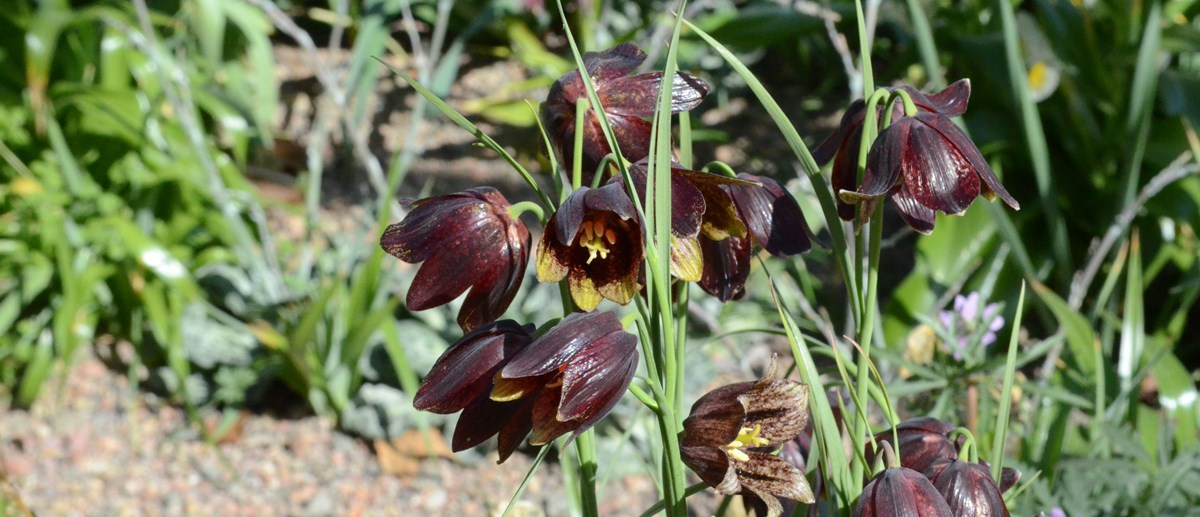Distribution and climate

Geophytes are mainly found in areas with a Mediterranean climate or atemperate steppe climate (between latitude 30° - 40° north and south of theequator). Areas especially rich in geophytes are: 1) a belt from the Mediterraneanthrough Turkey to Central Asia, 2) California and Oregon in western NorthAmerica and 3) the Cape Province of South Africa, which is the richest in species.The majority of our garden bulbs descend from the Eurasian “bulb belt” (1).
Tulips, Fritillarias and Hyacinths are predominantly steppe plants with prolonged dormancy.
Another group of geophytes, for example Squill, Spring Crocus, Grape Hyacinths, Glory-of-the-snow, and, descend from the mountain meadows. Here, summers are shorter and wetter, so geophytes from these areas are often well suited for the Swedish climate, and are readily naturalised.
Finally, there is a large group of geophytes, such as Corydalis, Trilliums, Wood Anemones and Fawn Lilies which come from an entirely different environment, which is found in most areas with a temperate climate, namely woodlands. This habitat fits the geophyte strategy, with a rapid spring growth before the trees' budbreak. But here it is the lack of light, not water, which is the reason behind the summer rest.
Sweden's climate is not very suitable for geophytes. But in the thin, summer dry soils on limestone we do find Meadow Saxifrage, Chives and St Anthony's Turnip. The fertile grove has a richer geophyte flora with species of Corydalis, Anemones, Celandine, Moschatel, Yellow Star-of-Bethlehem and Wild Garlic. Daffodils, Crocuses, Chionodoxas, etc often occur as garden refugees.
Seasonal Pattern
The main factor controlling the geophytes' annual cycle is temperature. When the thermometer shows 25° C in spring the nutrients in the leaves are transported down in the aestivation organ, while a 10° C in autumn triggers growth processes. Roots form from the stem and in the buds cells begin to divide rapidly. When the first autumn rains moisten the soil, the process goes even faster.
The next year's shoots with leaves and flowers grow during the autumn, winter and early spring. In the spring warmth they reach towards the light, flowers, are pollinated by early bees, seed are set and the plant withers. When summer comes, every visible part of the plant has disappeared and the next year's primordial leaves and flowers are at rest in the new aestivation organ.
Most of the geophytes we grow in Swedish gardens have an active season between September and May. Autumn flowering geophytes, as Naked Ladies and autumn flowering Crocus, bloom right after the resting period but develop leaves in the following spring.






